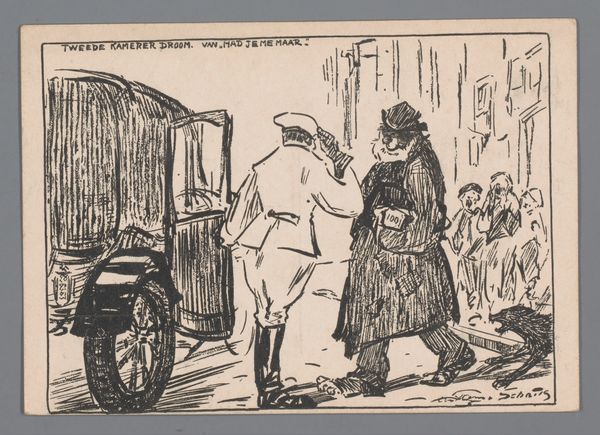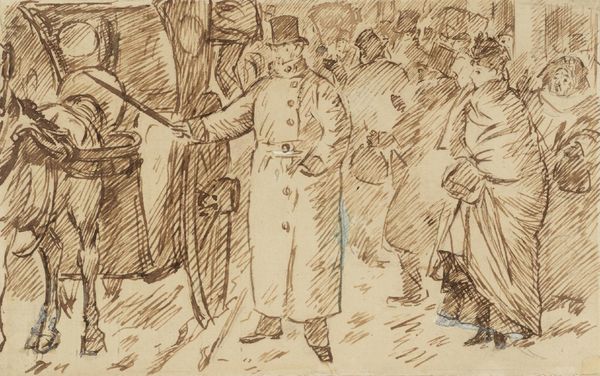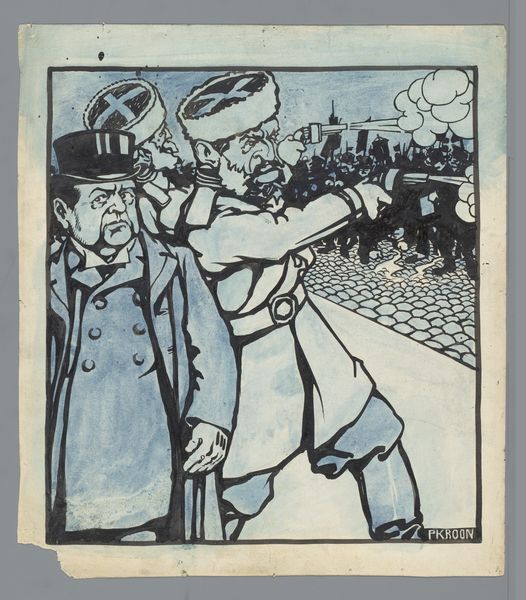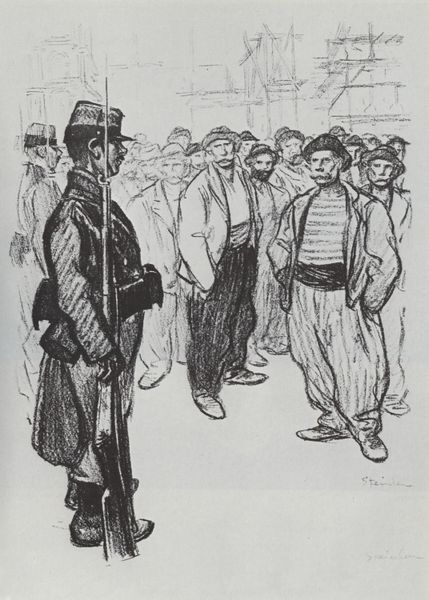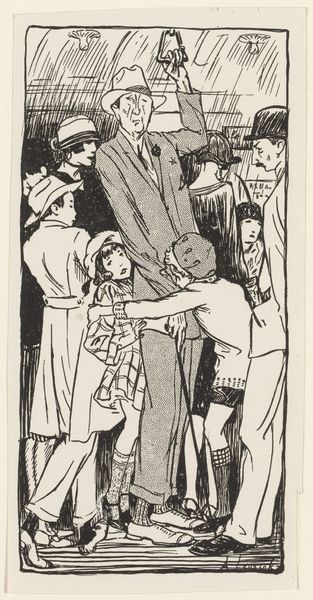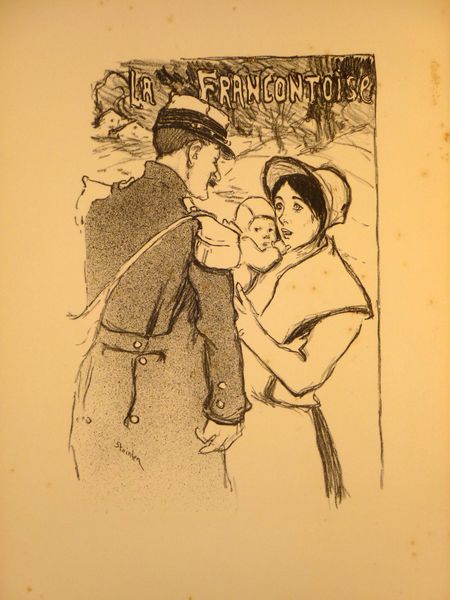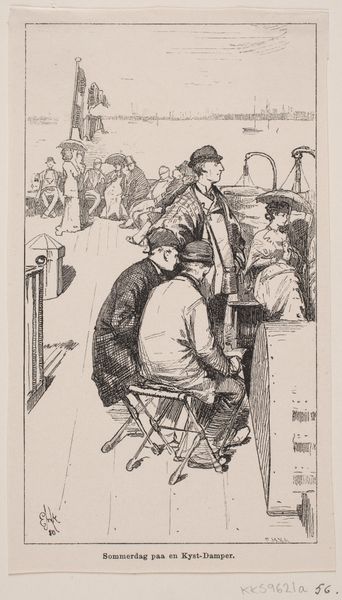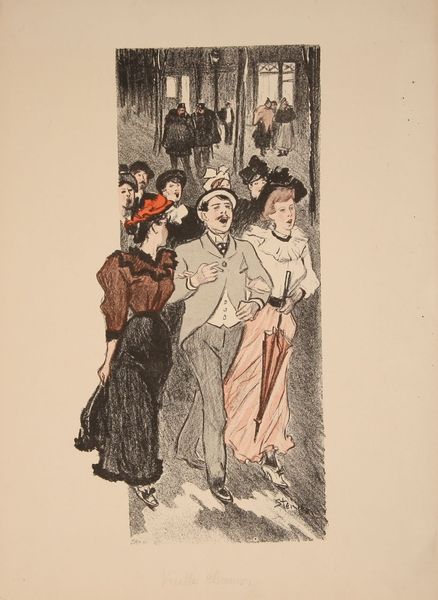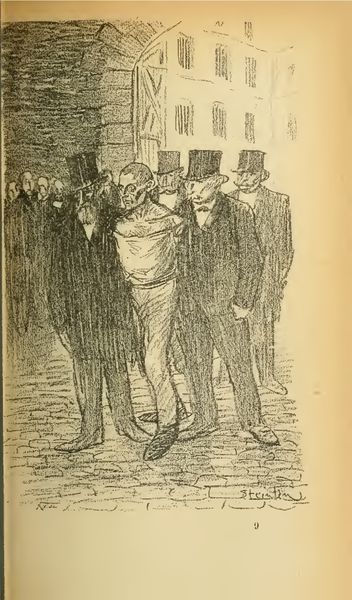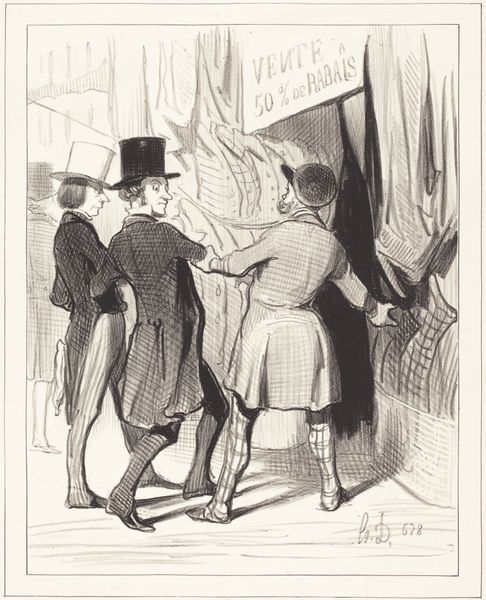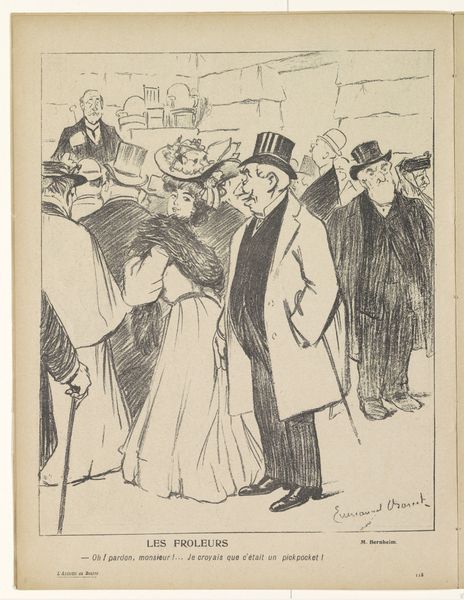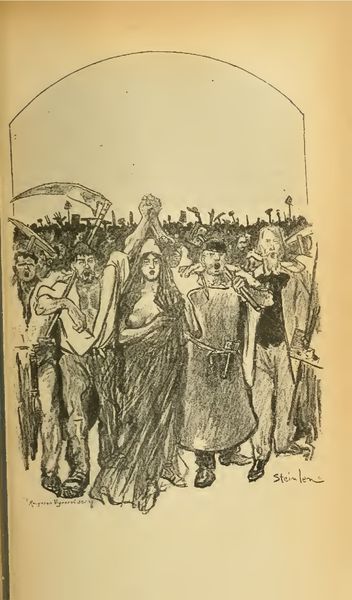
drawing, lithograph, print, ink, pen
#
drawing
#
art-nouveau
#
ink drawing
#
lithograph
# print
#
pen sketch
#
figuration
#
social-realism
#
ink
#
sketch
#
comic
#
pen
#
genre-painting
#
realism
#
calligraphy
Copyright: Public domain
Curator: Let’s talk about Théophile Alexandre Steinlen’s lithograph, "Lettre d'un Gréviste," created in 1893. It immediately strikes me as somber, stark even. The figures seem to emerge from a kind of social fog. Editor: The mood is definitely heavy, a feeling amplified by the medium itself – the density of the lithographic ink. I’m curious about Steinlen's choice of printmaking here. He created a reproductive technique often associated with mass media, yet it gives it such tactile presence, don’t you think? Was he trying to reach the public with a specific statement or evoke discussion about striking laborers? Curator: Absolutely. Think about France at the end of the 19th century – a period of significant industrial unrest. We have an interplay here between labor representation and class politics. This portrayal is of the commoner by the artist, making commentary about labor struggles of the time. There's a narrative unfolding here about power dynamics. Editor: Precisely. And it is hard to miss that this powerful imagery exists precisely because of a network of distribution, facilitated by modern technologies and methods of production, where materials became inexpensive enough to depict social tensions so directly. The materiality echoes the subject. Do you read it that way, or do you feel Steinlen had intentions to uplift workers and represent a collective? Curator: Perhaps it's both. These people appear weathered. Look at how the lines create texture in the clothing - almost mirroring their economic precarity. It suggests a certain resilience, but the women in the background and the child pointing are symbols that elicit feelings for future well being of those marginalized. Steinlen emphasizes the means by which this scene is consumed as information as well as aesthetic appreciation. Editor: Agreed. It challenges this established sense of division of labor, of high versus low culture, really making us question the value systems in art itself. Curator: Exactly. This piece is really important in its portrayal of resistance, one that reflects a time of both social anxiety and artistic possibility. Editor: Ultimately, “Lettre d'un Gréviste" prompts us to consider the relationship between labor and art – both the depicted struggle, and its reproduction across society.
Comments
No comments
Be the first to comment and join the conversation on the ultimate creative platform.
